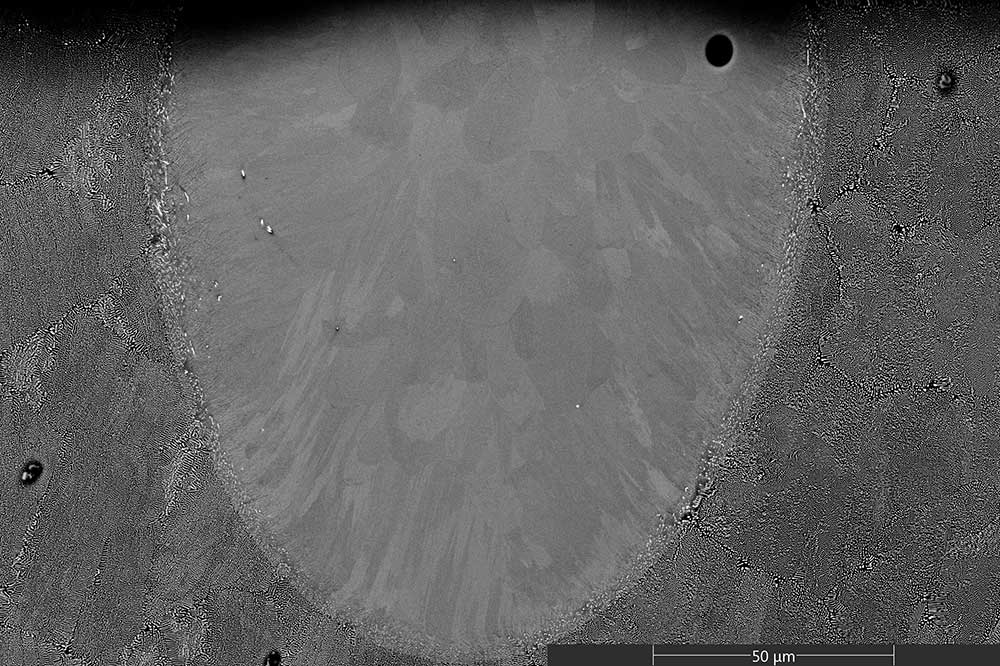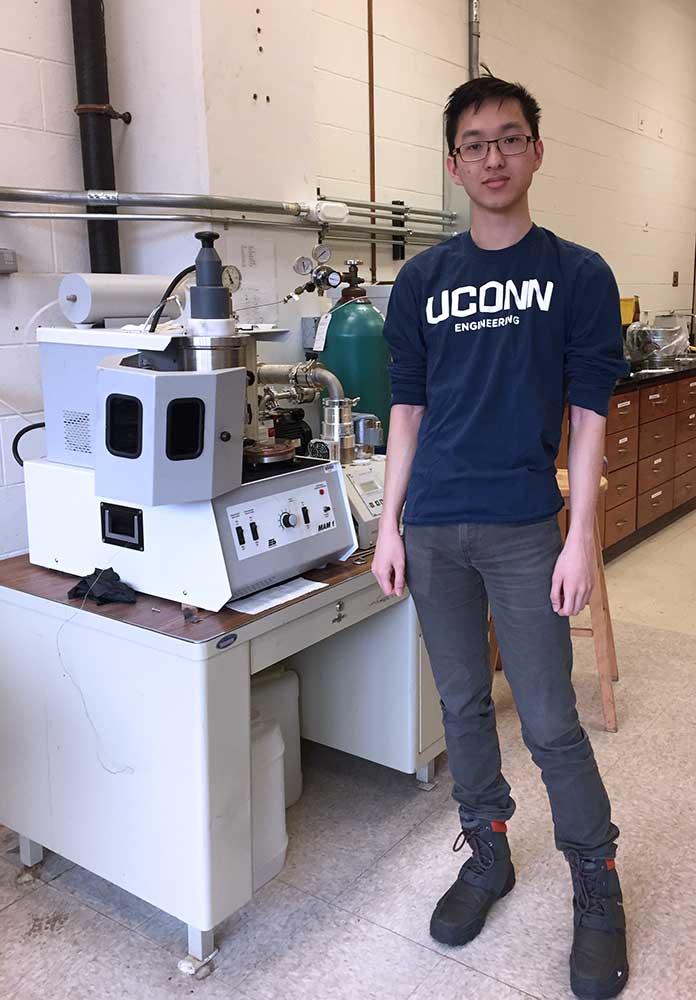Ph.D. Student, Cain Hung Explores the Possibilities of Additive Manufacturing
By Amanda Olavarria
Everyone in the field of materials science and engineering has a distinct definition of what it means to study the subject, but for 3rd-year graduate student, Cain Hung it means the understanding of how to make one thing into another. He uniquely compared this concept to the idea of a legendary substance known as the philosopher’s stone, which can turn any base metal into gold.
Much like this alchemical substance, Cain Hung believes that the application of materials science and engineering can too have this transformative effect. Since materials science essentially explores how things are made, Cain found this field to be incredibly relevant and applicable.
In fact, the research he participated in as an undergraduate was what sparked his interest in an area of materials science known as additive manufacturing or 3D printing. “There is something great about being around a machine with the capability to create many possibilities,” he claimed in reference to the 3D printing machine. Cain found that the more he learned about these machines, the more he discovered what type of designs he could make with them. In opposition to the misconception that “one can make anything” he states that various factors go into the kinds of designs one can make including the type of material and machine.
When searching for a university to pursue his Ph.D. Cain’s primary interest was finding one with a specialization in 3D printing. After looking into Associate Professor Rainer Hebert’s group, which focuses on additive manufacturing, Cain was convinced to continue his education at UConn as a part of Hebert’s research group.
Currently, Cain works on a project called aluminum alloy development for additive manufacturing, in which he is tasked with figuring out which aluminum alloys can be printed and have useful properties. His research is especially important due to the recent push from industry for new alloys tailored for additive manufacturing.

A back-scattered SEM image of a cross-sectioned melt track made by laser glazing an Al-3Ce at% substrate. It shows the unmelted state towards the left, right, and bottom edges and the effect that rapid local melting and solidification has on the microstructure.
The MSE Department’s interconnectedness played a huge role in Cain’s success as a Ph.D. student and he believes it to be one of the department’s many assets. At UConn MSE, sharing expertise is encouraged between research groups and often assists in further developments in research. In Cain’s current project he works with the groups of Professor Alpay, Professor Aindow, and Assistant Professor Lee, which allows him to receive input from experts in advanced characterization techniques, computational materials science, and traditional metallurgy.
Along with the insight he has gained from working with several research groups; Cain has also received excellent support from his advisor, Professor Hebert. He has helped Cain in pointing out valuable resources, showing him the best research books to utilize, and assisting him with any questions he may have.
His advisor said, “Cain’s creativeness and talent combining computational approaches and experimental work has helped the research team to make good progress. He guides undergraduate students in their own research projects, which enhances his own educational experience. With a research topic that is firmly anchored in decades of metallurgical relevance, yet is directed toward cutting edge manufacturing technologies, Cain is on an excellent trajectory to become a research leader in industry in the near future.”
The nature of the research project Cain is currently working on requires that he gives frequent talks to companies about his research progress. By doing this, he has gained knowledge on how to present his research effectively. “I have come to learn how to present my research in an understandable way, making sure to emphasize certain aspects depending on the audience,” he explained. Ultimately, Cain hopes to utilize the skills he has acquired in both his undergraduate and graduate years to pursue a career in research and development within the industry.
Published: March 2, 2018
Categories: graduate students, news, research
Available Archives
